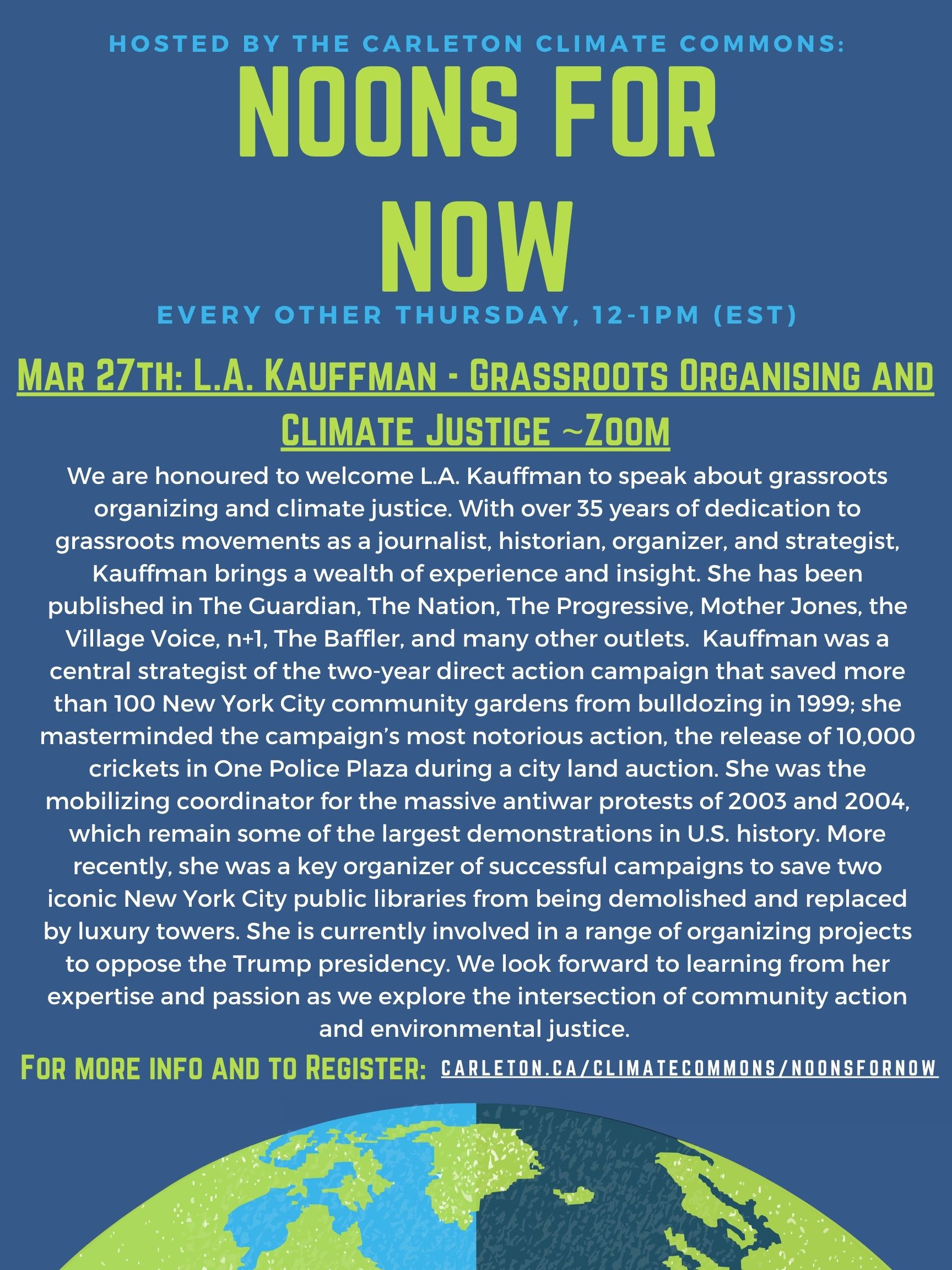
We are honoured to welcome L.A. Kauffman to speak about grassroots organizing and climate justice. With over 35 years of dedication to grassroots movements as a journalist, historian, organizer, and strategist, Kauffman brings a wealth of experience and insight. From her work saving over 100 New York City community gardens to mobilizing some of the largest antiwar protests in U.S. history, her contributions to activism are nothing short of inspiring. We look forward to learning from her expertise and passion as we explore the intersection of community action and environmental justice.
Speaker: L.A. Kauffman has spent more than thirty-five years immersed in grassroots movements, as a journalist, historian, organizer, and strategist. Her writings on organizing and social movement history have been published in The Guardian, The Nation, The Progressive, Mother Jones, the Village Voice, n+1, The Baffler, and many other outlets. Kauffman was a central strategist of the two-year direct action campaign that saved more than 100 New York City community gardens from bulldozing in 1999; she masterminded the campaign’s most notorious action, the release of 10,000 crickets in One Police Plaza during a city land auction. Kauffman was the mobilizing coordinator for the massive antiwar protests of 2003 and 2004, which remain some of the largest demonstrations in U.S. history. More recently, she was a key organizer of successful campaigns to save two iconic New York City public libraries from being demolished and replaced by luxury towers. She is currently involved in a range of organizing projects to oppose the Trump presidency.
Actions
- Focus on your expressive aims when protesting, think about what you are fighting for and what change you want to see
- Recognize that direct action can refer to a large variety of efforts to create change outside the established mechanisms of government
- Understand how protests shed new light on the catalytic power of collective action and the decentralized model for organizing that has ultimately transformed what movements look like and what they can accomplish
- Become aware of the many protests fighting for a collective right that may be forgotten or hidden to the public such as environmentalist, anti-nuclear, anti-apartheid, feminist, LGBTQ, anti-globalization, racial-justice and anti-war movements
- Focusing on morale can help you think more strategically and allow for more discipline and enthusiasm when engaging with the thoughts of protests or why a protest might occur
- Recognize that protest burnout is a common issue across generations of movements and that it still exists today
- As an activist, question how to create protests that do not let/fuel depletion and burnout occurrence, and work towards this end goal
- When forming your protest, implement ideas from previous movements and form bonds with progressive institutions/organizations to fuel your need for collective strategic activism.
Resources
Websites:
- https://lakauffman.org/
- https://www.ericachenoweth.
com/ (A great site for all their books and research on resistance)
Articles:
Books:
- Direct Action: Protest and Reinvention of American Radicalism, L.A. Kauffman
- How to Read a Protest: The Art of Organizing and Resistance, L.A. Kauffman
- Practical Radicals: Seven Strategies to Change the World, Deepak Bhargava and Stephanie Luce
- The Activist Humanist: Form and Method in the Climate Crisis, Caroline Levine
- Inversion, Aric McBay
- Let this Radicalize you: Organizing and the Revolution of Reciprocal Care, Kelly Hayes and Mariame Kaba
- Another Politics: Talking Across Today’s Transformative Movements, Chris Dixon
- Diminished Democracy, Theda Skocpol